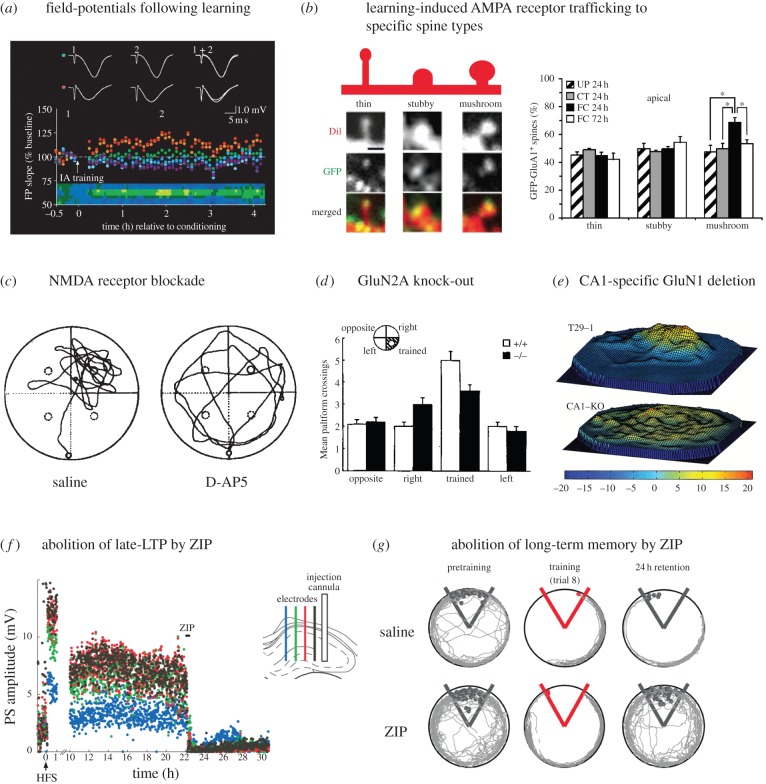Figure 1.
Illustrative findings relevant to the established criteria for assessing the SPM hypothesis. (a,b) Detectability. Field-potentials are increased on some but not all electrodes of a multi-electrode array in area CA1 following inhibitory avoidance learning (Adapted with permission from Whitlock et al. [42] © AAAS) (a). AMPA receptor trafficking detected optically using a GFP label in association with learning, with GluA1 targeted specifically at mature, mushroom-shaped spines (Adapted with permission from Matsuo et al. [43] © AAAS) (b). (c–e) Anterograde alterations. Pharmacological blockade of NMDA receptors in rats with chronic infusion of D-AP5 impairs spatial learning (Adapted with permission from Morris et al. [44]) (c). Genetic knock-out of GluN2A in mice also impairs spatial learning in the watermaze (Adapted with permission from Sakimura et al. [45] © Macmillan Publishers Ltd) (d). CA1 pyramidal cell-specific knockout of GluN1 in mice also impairs selective searching in the watermaze (Adapted with permission from Tsien et al. [46,47] © Elsevier) (e). (f,g) Retrograde alterations. Successful abolition by ZIP of long-lasting LTP 22 h after its initial induction (f). Corresponding abolition of long-term place-memory on a rotating platform by ZIP (Adapted with permission from Pastalkova et al. [48] © AAAS) (g).

